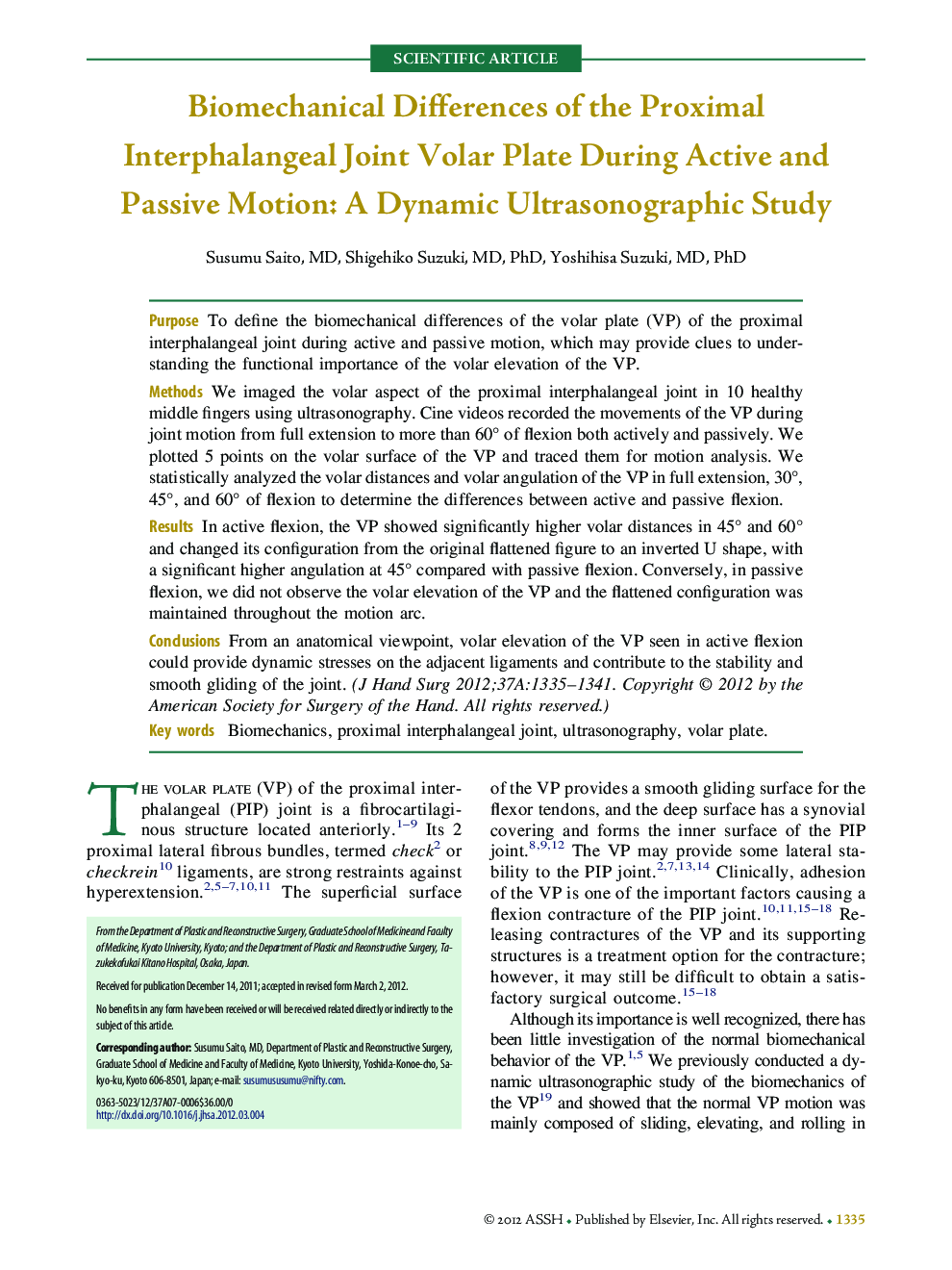| Article ID | Journal | Published Year | Pages | File Type |
|---|---|---|---|---|
| 4068395 | The Journal of Hand Surgery | 2012 | 7 Pages |
PurposeTo define the biomechanical differences of the volar plate (VP) of the proximal interphalangeal joint during active and passive motion, which may provide clues to understanding the functional importance of the volar elevation of the VP.MethodsWe imaged the volar aspect of the proximal interphalangeal joint in 10 healthy middle fingers using ultrasonography. Cine videos recorded the movements of the VP during joint motion from full extension to more than 60° of flexion both actively and passively. We plotted 5 points on the volar surface of the VP and traced them for motion analysis. We statistically analyzed the volar distances and volar angulation of the VP in full extension, 30°, 45°, and 60° of flexion to determine the differences between active and passive flexion.ResultsIn active flexion, the VP showed significantly higher volar distances in 45° and 60° and changed its configuration from the original flattened figure to an inverted U shape, with a significant higher angulation at 45° compared with passive flexion. Conversely, in passive flexion, we did not observe the volar elevation of the VP and the flattened configuration was maintained throughout the motion arc.ConclusionsFrom an anatomical viewpoint, volar elevation of the VP seen in active flexion could provide dynamic stresses on the adjacent ligaments and contribute to the stability and smooth gliding of the joint.
